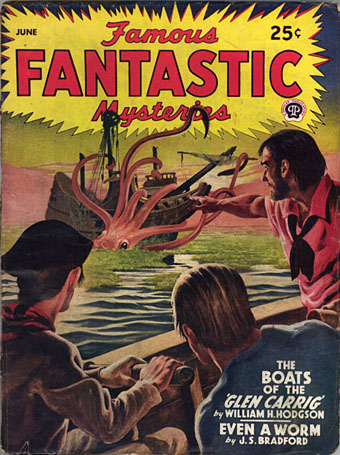
Famous Fantastic Mysteries, June 1945. Illustration by Lawrence (Sterne Stevens).
Following last week’s revelation of Lovecraftian horror, I thought it might be worth demonstrating just how much the tentacle-menacing-a-ship scenario is owned by William Hope Hodgson. The Boats of the ‘Glen Carrig’ (1907) is one of Hodgson’s lesser novels, overshadowed by the cosmic horrors of The House on the Borderland and The Night Land, but it’s a memorable work all the same. The narrative fits into his cycle of Sargasso Sea stories: a small band of 18th-century sailors, survivors of the wreck of the ‘Glen Carrig’, drift across the Atlantic into the weed-strewn “cemetery of the oceans” where they have to fight off giant octopuses and the predations of “weed men”, humanoid creatures with tentacular hands. As will be seen below, it’s the attack on a wrecked ship trapped in the weed that many of the illustrators have chosen to focus on.
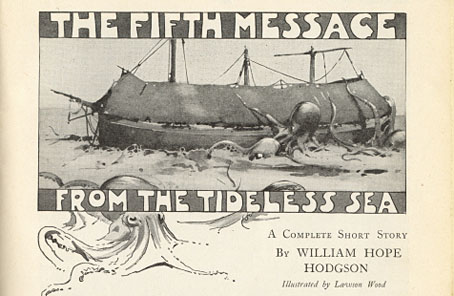
Illustration by Lawson Wood (1911).
This was something I hadn’t seen before: an illustration for a story with a scenario very similar to ‘Glen Carrig’ where the sailors journey under canvas in their lifeboats. Another tale of the sinister Sargasso:
This is the fifth message that I have sent abroad over the loathsome surface of this vast Weed-World, praying that it may come to the open sea ere the lifting power of my fire-balloon be gone, and yet, if it come there, how shall I be the better for it? Yet write I must, or go mad, and so I choose to write, though feeling as I write that no living creature, save it be some giant octopus that lives in the weed about me, will ever see the thing I write. (more)
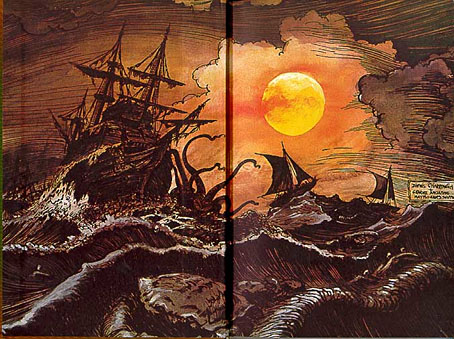
Les Canots du “Glen Carrig” / La Maison au bord du monde / Les pirates fantômes (1971). Illustration by Philippe Druillet.
A French Hodgson collection, the octopoid cover of which can be seen here. These were the endpapers; the rest of Druillet’s illustrations can be seen here.
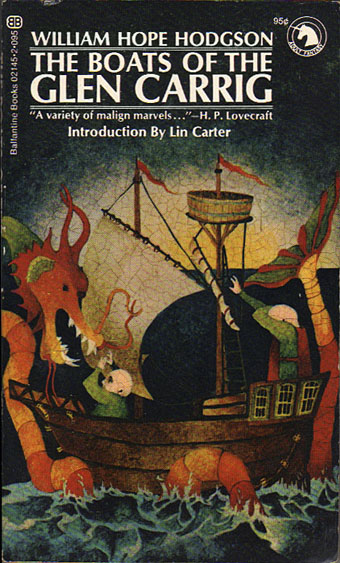
Illustration by Robert LoGrippo (1971).
The ship in the Ballantine Adult Fantasy edition seems to be menaced by an aquatic dragon even though nothing of the sort appears in the novel.
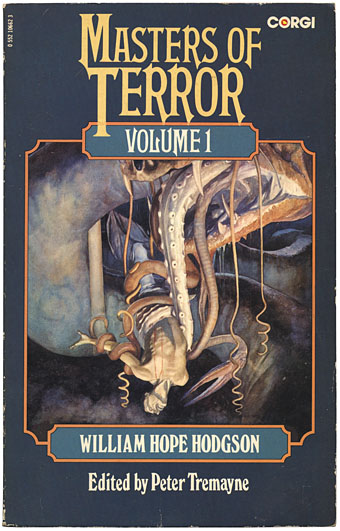
No illustrator credited (1977).
More hybrid weirdness with this gigantic serpent and its mouth full of tentacles. A short collection that contains two Sargasso Sea stories one of which, The Finding of ‘The Graiken’, features another ship besieged by octopuses.
Les Edwards (1982).
Les Edwards’ painting for a Sphere paperback gives us something of Kraken-like dimensions. The artist sells prints of this picture.
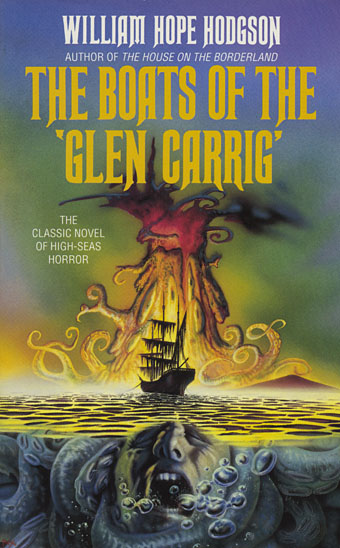
Illustration by Luis Rey (1991).
I’ve never been sure what that tentacled volcano was supposed to be but I approve of the Rubens typeface, a common sight on horror paperbacks in the 1970s.
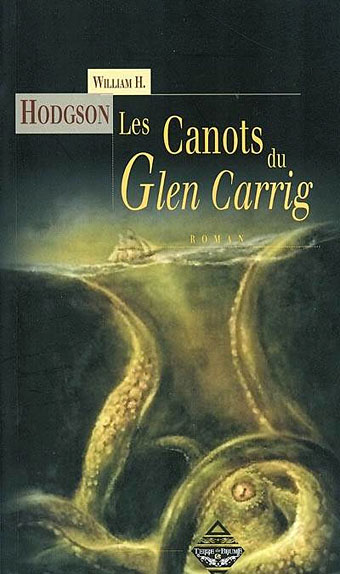
Illustration by Bob Eggleton (2004).
The most recent edition I’ve found, a French book with a cover by an American artist. Bob Eggleton has painted Cthulhu on several occasions.
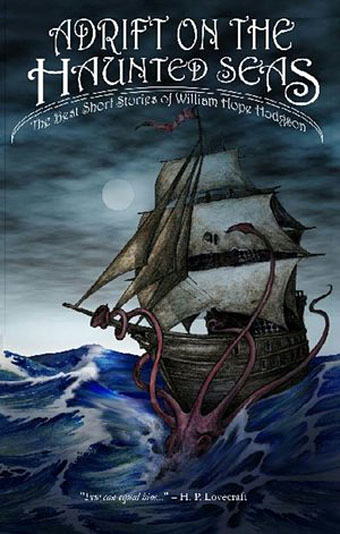
Illustration by Daniel Govar (2005).
A recent story collection from Cold Spring Press, this volume includes From the Tideless Sea as well as others in the Sargasso Sea cycle.
Anyone wishing to read a copy of Hodgson’s novel can find it in a variety of formats at Gutenberg.org. For more detail about the author’s life and work there’s Sam Gafford’s WHH blog. There’ll be more tentacles tomorrow.
Elsewhere on { feuilleton }
• The book covers archive
• The illustrators archive
Previously on { feuilleton }
• S. Latitude 47°9′, W. Longitude 126°43′
• Hodgson versus Houdini
• The art of Robert Lawson, 1892–1957
• Weekend links: Hodgson edition
• Octopulps
• Druillet meets Hodgson

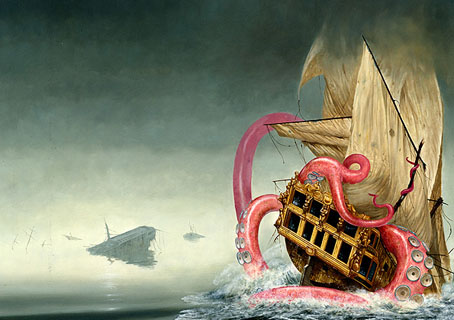
Eating lunch at work as I read this. Guess what I’m eating….https://www.facebook.com/media/set/?set=a.113578222039996.16171.100001634574170&type=3#!/photo.php?fbid=420748027989679&set=a.113578222039996.16171.100001634574170&type=3&theater
If the link doen’t work I’ll email the photo to you :-)
Heh, the photo worked but I guessed it would be calamari or something. I like seafood but I’ve never eaten any tentacles.
Well it’s actually got baby octopuses in it too so they are really tentacles ;-)
A great collection of covers – I bought the Ballentine edition of this a few years ago because I liked the cover so much, and was pleasantly surprised by how much I liked the novel itself. I was amused to see another take on one of the book’s creature encounters in the 1961 film The Mysterious Island, which contains a Ray Harryhausen cinematic version of the giant crab attack. It’s as though scripted entirely from Hodgson’s novel.
Hi Scott. Mysterious Island is a Jules Verne novel so it’s possible Hodgson may have got the idea for giant crabs from there. That said, none of his work is really Verne-like–no Nemo/Robur figures or submarines, for example–and you don’t need the greatest imagination to scale up an already existing animal.